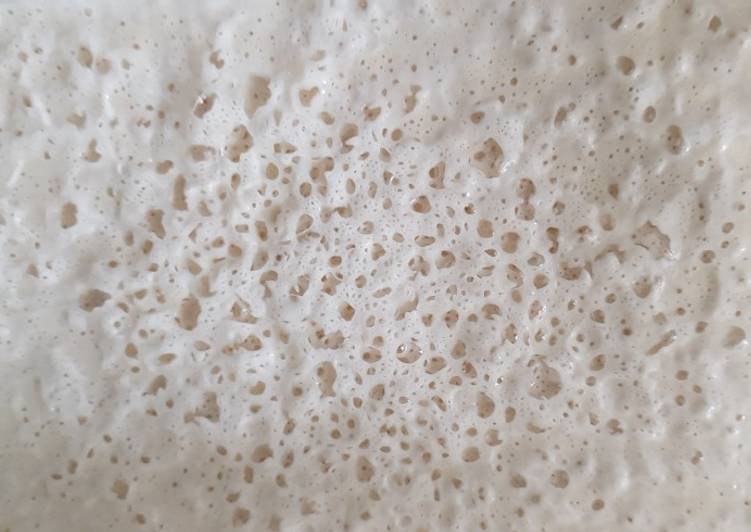Sourdough starter. Each day you "feed" the starter with equal amounts of fresh flour and water. As the wild yeast grows stronger, the starter will become more frothy and sour-smelling. This was my first successful sourdough starter!
Share all people, cooking is indeed things which is quite soft. Besides they are indeed like cooking and have will cooking that is quite, they are also creative in integrating each dish so that it becomes food delectable. But there are those who cannot skillfully cook, so they must learn and see recipes that are cushy to follow.
 Or you can stash your starter in the fridge once it's established and bake from it once a week.
Gradually stir in warm water until smooth.
The idea of a sourdough starter—a live culture of wild yeasts that you feed, using it to "start" breads—can seem intimidating.
Or you can stash your starter in the fridge once it's established and bake from it once a week.
Gradually stir in warm water until smooth.
The idea of a sourdough starter—a live culture of wild yeasts that you feed, using it to "start" breads—can seem intimidating.
You can cook Sourdough starter use 6 ingredients and 11 the steps. Here guides how you mix it.
The main ingredient Sourdough starter as follows:
- You need of 1 Day.
- Provide 25 g of water.
- Provide 25 g of plain flour.
- You need of 2 Day.
- You need 50 g of water.
- Provide 50 g of plain flour.
But a sourdough starter requires just flour and water. To make one, all you need is two ingredients, a digital scale, and about five minutes every day for up to a week. The longer the starter has been dormant, the more times it will need to be refreshed - the process of pouring off half the starter and replacing it with new flour and water - to reactivate. If your starter is ready to use, a teaspoonful of the mixture should float in warm water.
How to Make Sourdough starter
- Add flour and water to a suitable lidded container and stir until well combined..
- Pop the lid on and leave in a warm spot out of direct sunlight..
- Day 2, you will find the mixture is thickened and begins to show some small bubbles and separation. Simply add 50g flour and 50g water and stir into mixture. Pop lid back on and pop it back in the warm spot..
- Day 3 you may decide to remove a tablespoon or two from the mixture so you don't end up with too much. Once you gave done this put the discard aside and use it to make pancakes or in another recipe. Some people throw it away but I hate to waste!.
- Weigh the remaining sourdough starter. Whatever the weight you aim to double it by adding half the amount of water and half flour..
- Keep using the same type of flour. Don't for example start with plain flour then switch to wholemeal..
- Each day the starter will look a little unpleasant. It will begin to have a sour smell and when hungry will produce a watery yellowish substance called hooch. This can be carefully discarded before feeding with flour and water..
- If you want to keep track of activity, since it's best used when active to make bread, pop a post it on container to mark the top of the mixture. You can then easily see if it has grown in size..
- If you want to wait before the next feeding, for example if you run out of flour, just pop it in the fridge..
- Keep maintaining it this way and it will last a very long time. Just use what you need in the recipe. If however you notice any black spots, this is mould and you need to throw it away and start over. This hasn't happened to me so far..
- Some people like to name their pet yeast too lol..
The starter can now be used to make white sourdough bread. Mix with a fork until smooth; the consistency will be thick and pasty. A sourdough starter is a collection of wild yeasts naturally found everywhere, from the air in your home to the flour you're using. Whole-grain flours contain more of the wheat kernel, so they. When I first got a sourdough starter, it was unclear if what I had acquired was a gift or an old-timey curse.